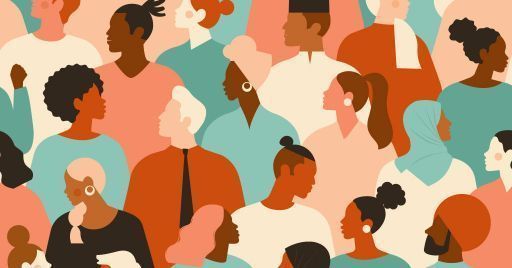
Localization of content: adapting courses to diverse cultures

When creating a course, it is essential to consider the cultural diversity of the target audience. This is where content localization comes into play.
In the realm of education, to ensure that concepts are understood and embraced by all course participants, it is crucial to reference shared information and values. Those developing courses and instructional materials should take into account these diversities.
Content localization, a vital process that goes beyond mere translation of educational material, is the key player here. Localization is the art of adapting content to resonate with different cultures, languages, and local regulations, ensuring that learning is not only accessible but also contextually relevant for all participants.
The importance of localization in eLearning is undeniable. A course that works well for an audience in one country may not be equally effective in another cultural context. Differences may lie in language, cultural symbols, examples used, or legal regulations influencing the learning content. For instance, an eLearning course on workplace safety must adhere to specific local regulations, which vary significantly from one country to another.
Effective localization requires a deep understanding of the course recipients. It is not just about translating words but interpreting and adapting meaning, tone, and context. This involves a customization process that goes well beyond language, encompassing visual, regulatory, and cultural aspects.
Read also: "Tips for facilitating the localization of an online course".
Understanding different cultural contexts
As mentioned, localizing eLearning content involves a profound understanding of different cultural contexts. Each culture possesses its own norms, values, symbols, and expectations, significantly influencing the effectiveness of learning. The cultural sensitivity of course designers and developers involves not only accurately translating language but also adapting content to respect and reflect these cultural diversities.
What is considered an effective or humorous example in one culture may be irrelevant or even offensive in another. Therefore, course designers must exercise caution in using such elements, ensuring they are appropriate and respectful for all audiences.
The visual presentation of courses, including colors, images, and symbols, must be carefully evaluated. For example, colors can have very different meanings in various cultures; white is often associated with mourning in some parts of Asia, while in many Western countries, it symbolizes purity and peace.
The same applies to images. Consider those related to animals. Animals can have different cultural meanings depending on the country. An owl, for instance, is seen as a symbol of wisdom in many Western cultures but may be considered an omen of misfortune in some Asian cultures.
The role of key figures
Developing effective eLearning courses that respect the cultural differences of participants requires the contribution of various professionals, each with a specific role in the localization process:
Instructional Designer – Instructional Designers are responsible for the overall structure of the course, ensuring that learning objectives are effectively achieved. In the context of localization, they work to ensure that the course design is flexible and adaptable to different cultural contexts. For example, they may design learning scenarios that are culturally neutral or easily adaptable to diverse cultures.
Subject Matter Expert (SME) – SMEs provide specific industry or subject matter expertise for the course. In the localization process, they ensure that content is not only technically accurate but also culturally appropriate. For instance, an SME in the field of health and safety at work should be aware of the diverse regulations and practices in various countries.
Translators and localizers – These professionals go beyond translating text; they adapt content to make it relevant and understandable in different cultures. For example, an English idiomatic phrase might be replaced with a cultural equivalent in another language to maintain the original meaning and emotional impact.
Graphic and multimedia designers – These experts create the visual elements of the course, such as graphics, animations, and videos. In localization, they must consider how different symbols, colors, and images may be perceived in diverse cultures. For example, the use of the color red may be associated with danger in some cultures but with luck in others.
Technologies and tools for localization
Technology can be instrumental in adapting content to diverse cultures. These technological aids not only streamline the localization process but also ensure greater consistency and quality in educational materials. Two prominent examples are artificial intelligence (AI) and analytical tools.
Artificial intelligence (AI) and machine learning are revolutionizing the field of eLearning localization. These technologies can automate parts of the translation process, accelerating the production of multilingual content and reducing costs. However, it is crucial that AI is used in conjunction with human experts to ensure that localization maintains the necessary cultural sensitivity and accuracy.
Advanced analytical tools enable eLearning course creators to monitor the effectiveness of their localized content. These tools can collect data on user interaction, course completion rates, and learner feedback, providing valuable insights for continuously improving training materials. Direct feedback from end users is invaluable for refining and optimizing content for different audiences.
The use of these technologies in the localization of eLearning content not only enhances the quality and effectiveness of training materials but also allows for scaling courses to reach a global audience efficiently and sustainably. As technology advances, a world of possibilities opens up for creating increasingly personalized and engaging learning experiences.
Did you like this article? Sign up for the newsletter and receive weekly news!
Subscribe to NewsletterComments:
No comments are in yet. You be the first to comment on this article!